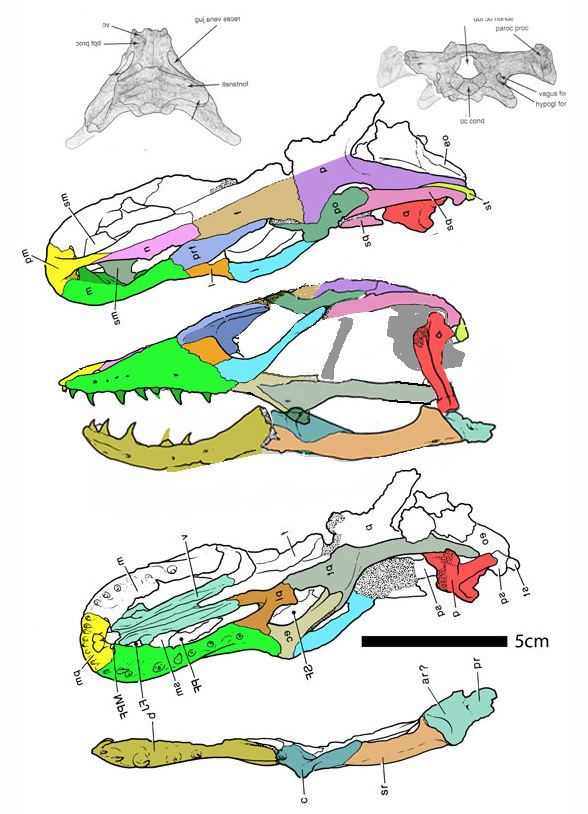Infraorder Anguimorpha Scientific name Estesia Higher classification Gila Monsters | Superorder Lepidosauria Superfamily Helodermatoidea Phylum Chordata Rank Genus | |
 | ||
Similar Palaeosaniwa, Aigialosauridae, Varanoidea, Kaganaias, Adriosaurus | ||
Estesia (in honour of Richard Estes) is an extinct genus of Late Cretaceous helodermatoid lizard found in the Gobi Desert in Mongolia. It was discovered in June 1990 by a joint expedition made up of Mongolian and American palaeontologists, and described in 1992 by Mark Norell, Malcolm McKenna and Michael Novacek. This animal is very interesting, not only because it's close to the lineage of modern Gila monsters (Heloderma), but also because its dentition shows evidence that it was venomous.
Contents
The type species is E. mongoliensis, after Mongolia, where it was found.
Material
Material for Estesia has been collected in various localities in the Gobi Desert, including the Barun Goyot Formation, the Djadochta Formation and Ukhaa Tolgod.
Systematics
In the description, Estesia was assigned to Varanoidea, as the sister group to Varanidae, based on skull characters. However, the new material found in 1993 provided evidence that Estesia was not closely related to modern varanids, but rather a distant relative of Gila monsters. The phylogenetic analysis presented by Norell and Gao (1997) actually supported the creation of a new group that included modern Gila monsters and extinct pre-historic forms, the Monstersauria.
Palaeobiology
The teeth of Estesia were sharp and recurved, like in modern varanoids. These teeth possess longitudinal grooves that run both from the anterior and posterior tooth surfaces during the entire tooth length. Similar characteristics are present in the teeth of Gila monsters.
